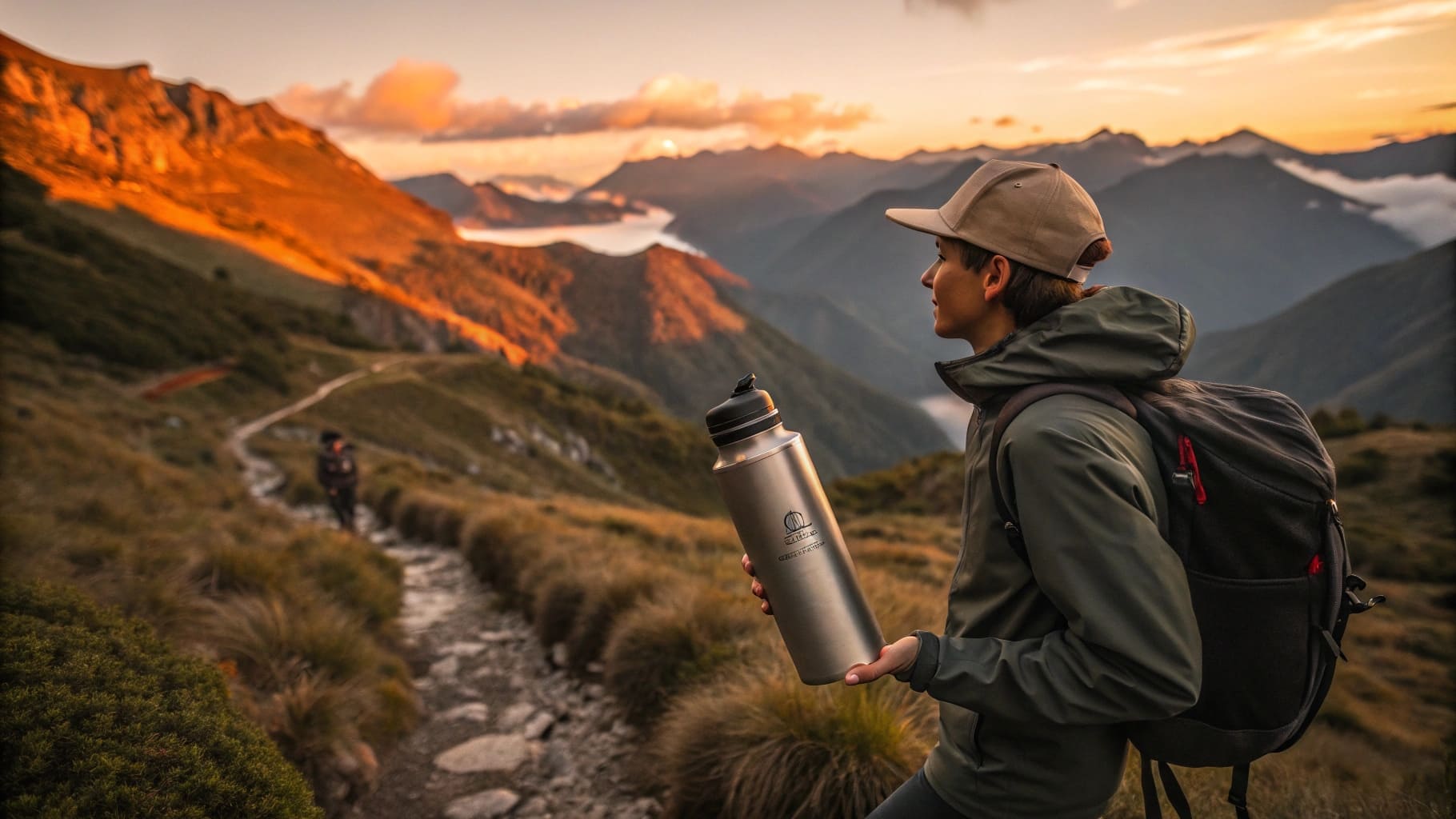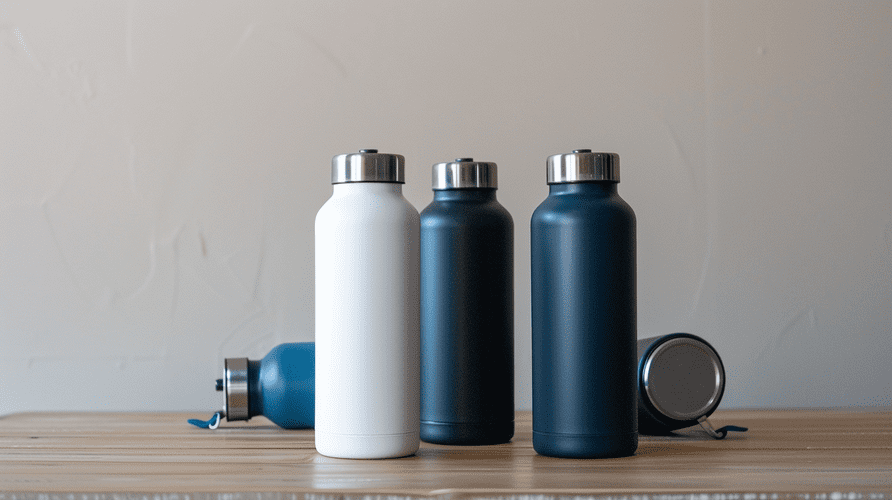Struggling to find reliable insulated bottle suppliers? Wasting time on poor quality or misleading claims? This guide simplifies your sourcing, ensuring top-quality buys for your business.
For B2B buyers like Mark Shenng, sourcing quality insulated water bottles means looking for manufacturers with proven expertise in double-wall vacuum insulation, typically using food-grade 18/8 stainless steel. China is a key sourcing hub, offering competitive pricing and customization.

So, you're aiming to source the best insulated bottles, but what does 'best' truly mean for your business in Canada, Mark? It's more than just a label. I've worked with many business owners who, like you, need reliable products to build their brand and avoid the frustrations of poor supplier communication or product issues. Let's explore the critical details together. You won't want to miss this if you're serious about quality and sidestepping common sourcing pitfalls.
How do you know if a water bottle is insulated?
Confused by technical jargon for insulation? Risking purchases that don't perform as expected for your customers? Learn simple ways to identify genuinely insulated bottles right here.
An insulated water bottle typically features "double-wall" construction, often with "vacuum insulation" between walls. Look for claims of keeping drinks hot for around 12 hours or cold for 24 hours, a sweat-free exterior, and food-grade 18/8 stainless steel1.

When you're looking to source insulated bottles, Mark, understanding the tell-tale signs of quality insulation is absolutely key. It's not just about what a supplier claims; it's about verifiable features that prevent those headaches from products that don't live up to expectations. At Icobottle, we believe in transparency.
Key Insulation Indicators
Genuine insulated bottles, especially the stainless steel ones we specialize in, will always have a "double-wall" design. This means there are two layers of stainless steel. But the real magic for temperature retention happens with "vacuum insulation2" – that’s when the air between those two walls is removed. This process significantly cuts down heat transfer (conduction and convection), which is precisely how the bottle keeps drinks hot or cold for extended periods.
Performance You Can Trust
| What does this mean in practical terms for your inventory and your customers? | Feature | Expected Performance/Characteristic | Why it Matters for Your Sourcing |
|---|---|---|---|
| Temperature Retention | Stated to keep liquids hot for ~12 hours, Cold for ~24 hours | Directly impacts customer satisfaction and product value. | |
| Exterior Feel | Remains sweat-free with icy liquids; Not hot to touch with boiling water | Indicates effective insulation, user comfort, and safety. | |
| Material Quality | Made from food-grade 18/8 (SUS304) stainless steel, BPA-free | Ensures product safety, durability, and compliance with standards. | |
| Construction | Visible double-wall, often a slightly thicker base or rim. | Physical clue to the insulation mechanism. | |
| Verification | Ask about "Heat Preservation Test" results or certifications. | Provides objective proof of insulation claims from the supplier. |
For someone like you, Mark, who values quality to avoid issues like certificate fraud or underperforming products, these aren't just features; they're assurances. Focusing on these points helps you cut through misleading claims and secure products that genuinely deliver.
Is it okay to refrigerate an insulated water bottle?
Worried about potentially damaging your insulated bottle stock by chilling them? Unsure if refrigeration affects their performance or lifespan, impacting your customers? Understand how refrigeration interacts with insulated bottle technology.
Yes, you can refrigerate an insulated water bottle. The food-grade stainless steel construction won't be damaged. While it helps chill contents, the insulation itself resists external temperature changes, meaning it might cool the beverage inside slower than a non-insulated bottle.

Mark, a common question I get from procurement officers is about refrigerating these insulated bottles. It's a practical concern, especially when you're thinking about the end-user experience in Canada and the durability of the products you're sourcing for your distribution business. You want to ensure you're providing accurate care information.
Refrigeration and Insulated Bottles: What Happens?
| The straightforward answer is: yes, it's perfectly fine to put an insulated water bottle in the refrigerator. The materials we at Icobottle use, typically high-quality food-grade 18/8 stainless steel, are very robust and won't be harmed or degraded by cold temperatures. Here’s a more detailed breakdown of how refrigeration interacts with an insulated bottle: |
Aspect | Interaction with Refrigeration | Implication for Use & Your Business Considerations |
|---|---|---|---|
| Material Durability | Stainless steel is non-reactive and withstands cold without degradation or becoming brittle. | No damage to the bottle itself, ensuring product longevity. | |
| Cooling Contents | The refrigerator will chill the liquid inside the bottle. | Effective for pre-chilling beverages or maintaining already cold contents. | |
| Insulation's Role | The vacuum insulation is designed to slow down heat transfer from the outside in. | This means it might take longer for a warm drink inside the bottle to cool down in the fridge compared to a single-wall bottle. The insulation is doing its job by resisting the fridge's cold. | |
| Primary Benefit | The bottle's main advantage is maintaining the cold temperature for many hours after removal from the fridge. | This is the key selling point: extended cold retention on the go. |
So, while the fridge helps to chill the contents, the bottle's primary function – keeping drinks cold for extended periods once filled or after being chilled – is where its superior insulation truly shines. This understanding is key for your sales and customer education efforts.
Can I put boiling water in an insulated bottle?
Concerned about bottle safety when dealing with very hot liquids? Fear of potential damage, or worse, leaching chemicals when filling with boiling water? Discover why quality insulated bottles are built to handle extreme heat.
Absolutely. Well-made stainless steel insulated bottles are specifically designed to handle boiling water. The exterior remains cool to the touch, and quality food-grade stainless steel (like 18/8 or SUS304) won't degrade or leach, keeping hot drinks safe and maintaining their temperature effectively.

Mark, this is a crucial question for anyone sourcing bottles that will be used for hot beverages: can these insulated bottles safely handle boiling water? For your customers in Canada who might want to use them for coffee, tea, or other hot concoctions, this is a non-negotiable safety and performance aspect. You need assurance to avoid any product liability issues.
Boiling Water and Stainless Steel Insulation
| The answer is a confident yes, provided you're sourcing high-quality bottles made from the correct materials, like the ones we manufacture at Icobottle. Our insulated bottles are specifically engineered to manage hot liquids safely and maintain their temperature effectively. Here’s why this is possible and what to look for to ensure safety and performance: |
Feature | Importance for Hot Liquids | Benefit for Your Business & Risk Mitigation |
|---|---|---|---|
| Material Integrity | Food-grade 18/8 (also known as SUS304) stainless steel is chosen for its ability to withstand high temperatures without issue. | No material degradation, warping, or leaching of harmful metallic tastes or chemicals into the beverage. | |
| Insulation Performance | The double-wall vacuum insulation3 not only keeps drinks hot (e.g., up to 12 hours) but also protects the user. | Meets end-user expectations for hot drinks and ensures repeat business. | |
| Exterior Temperature | A key characteristic of good insulation is that the outer wall of the bottle remains cool, or at most lukewarm, to the touch, even with boiling water inside. | Prevents accidental burns, ensuring user safety and reducing liability. | |
| No Chemical Leaching | High-quality, food-grade stainless steel is non-reactive and stable. It does not react with hot liquids or release harmful substances like BPA or phthalates. | Ensures product safety, compliance with food safety regulations, and builds trust. |
When you're verifying suppliers, Mark, confirming they use the correct grade of stainless steel (18/8 or SUS304) and have robust quality control is vital. This directly impacts safety and performance, which in turn protects your brand's reputation and helps you avoid the significant problems associated with certificate fraud or substandard materials that you've rightly been concerned about.
Conclusion
Sourcing quality insulated bottles is simpler with the right knowledge. Focus on construction, material integrity, and verified thermal performance. Icobottle is ready to help you find your perfect match.
-
Exploring the significance of food-grade 18/8 stainless steel ensures you choose safe and durable insulated bottles for your customers. ↩
-
Learning about vacuum insulation will clarify how it enhances temperature retention in insulated bottles, ensuring better performance. ↩
-
Learn about double-wall vacuum insulation to appreciate its role in maintaining temperature and user safety in insulated bottles. ↩

